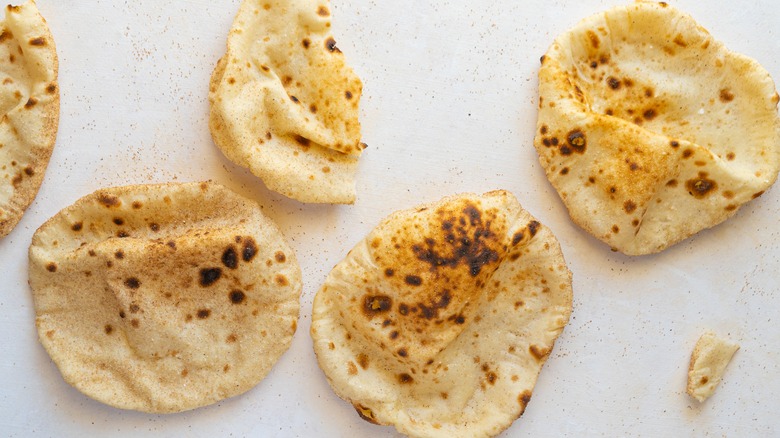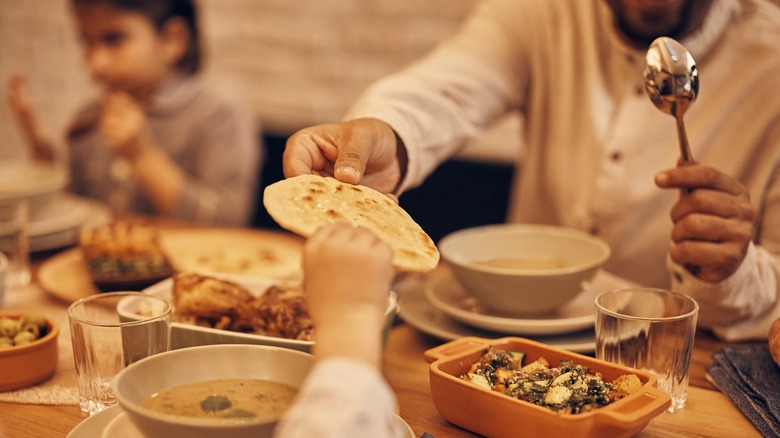The Fascinating Ancient History Of Pita
Also known as Arabic bread, Syrian bread, or pocket bread, pita (or pitta) bread is a yeast-leavened flatbread with an ancient history commonly found in Middle Eastern and Mediterranean cuisines (via Tofu Bud). Whether it's toasted in za'atar seasoning and dipped into freshly whipped hummus or warmed and wrapped around fried green falafels, when there's a basket of pita bread at the table, it's next to impossible to keep your hands off of it.
Since its origination in the Middle East (via Encyclopedia of Health), pita bread has spread to be prepared and enjoyed in cultures and cuisines across the globe — hence, the bread's many names. For this same reason, you'll find pita bread made slightly different from place to place and cuisine to cuisine. For example, Middle Eastern styles such as khubz have a pocket (via Silk Road Recipes), and Mediterranean styles, including the Greek pita, are denser. Though pitas can range in size, thickness, and sweetness, each shares the same ancient history.
Pita's prehistoric roots
The origins of pita and other flatbreads can be traced back over 10,000 years, when records show humans first began making bread (via You Are What You Eat). Its roots are in an area known as the Fertile Crescent, a region where Britannica says that the first agricultural communities of the Middle East settled. The area was situated between the Arabian Desert and the Armenian Highland mountains and extended in a crescent shape from Elam, up to Assyria, and down the coast of the Mediterranean Sea into Egypt.
Known for its fertile land and agriculture, travelers and conquerors alike were drawn to the Fertile Crescent (via World History Encyclopedia). During their time in the region, they undoubtedly tasted the pita bread, taking the baking method they encountered upon their return home. This is how pita bread eventually spread to other parts of the Mediterranean and Middle East. It's also why you'll find that the barbari bread of Persian cuisine (via Silk Road Recipes), Moroccan batbout bread (via Taste of Maroc), and many more are so similar yet still slightly different.

